New York City rebuilt after 9/11. Facing a different catastrophe, it sets out to do it again.
- Oops!Something went wrong.Please try again later.
NEW YORK – Andreas Koutsoudakis Sr.'s restaurants have been reborn a couple of times after crises.
The fire department relied on his lower Manhattan diner as a rescue site in the days after the Sept. 11 attacks. When he and his partner returned, they renovated and took over the spaces next door that other businesses left when they closed up shop.
In 2014, Koutsoudakis opened a new restaurant, Tribeca’s Kitchen, a few blocks over. When crisis hit again – this time in the form of the COVID-19 pandemic – the task of steering the restaurant through recovery fell to his son, Andreas.
The elder Koutsoudakis contracted COVID-19 and died in the early days of the pandemic. The loss stunned Koutsoudakis Jr., a lawyer with his own firm.
"I actually destroyed the store, demolition wise, before I even knew what I was going to do with it," he said.
Koutsoudakis' life, like many New Yorkers', changed 20 years ago after the Sept. 11 attacks. Once again, New York City has found itself at the center of tragedy and death, leaving many to wonder: How will it recover?
Many New Yorkers described striking resemblances between the two historic crises and the city's resilience amid recovery, according to interviews with several residents with backgrounds ranging from health care to the restaurant industry.
"There are a lot of similarities, unfortunately. New Yorkers are again mourning the loss of loved ones. Businesses have closed. Some people have moved. A lot have questioned the future of the city," former Mayor Michael Bloomberg told USA TODAY. "But people have short memories. The comeback that New Yorkers led 20 years ago should fill us with optimism, because there’s no reason we can’t do it again."

New York City bears the worst of both crises
On the morning of Sept. 11, 2001, Dee C. Marshall was chatting with a co-worker about their grandmothers when someone told them about a fire at the World Trade Center.
Marshall went to the window of her building at One New York Plaza, several blocks south of the World Trade Center, and saw a low-flying airplane. Moments later, it hit the south tower.
Marshall ran to the elevator, but when the doors closed and didn't reopen, she climbed down 33 flights of stairs and fled the area with her colleagues.
"I remember feeling like a character in a video game," she said. "I remember saying, you know, 'people are watching and controlling things. And you all knew more about it that I would know,' because we were on the ground."
In New York City, 2,753 people were killed as al-Qaida hijackers flew two airplanes into the twin towers of the World Trade Center, according to the 9/11 Memorial & Museum. A hijacked plane flew into the Pentagon outside Washington, and another crashed into a field in Pennsylvania, bringing the death toll from the attacks to 2,977.
In the early days of the COVID-19 pandemic, public officials often referred to the Sept. 11 deaths as a milestone marker to underscore the extent of the virus's reach.
New York City's first COVID-19 death occurred March 11, and less than a month later, the city surpassed its 9/11 death toll, according to city data. It reached the national death toll from the attacks April 2.
More than 33,800 people have died in New York City from the coronavirus.
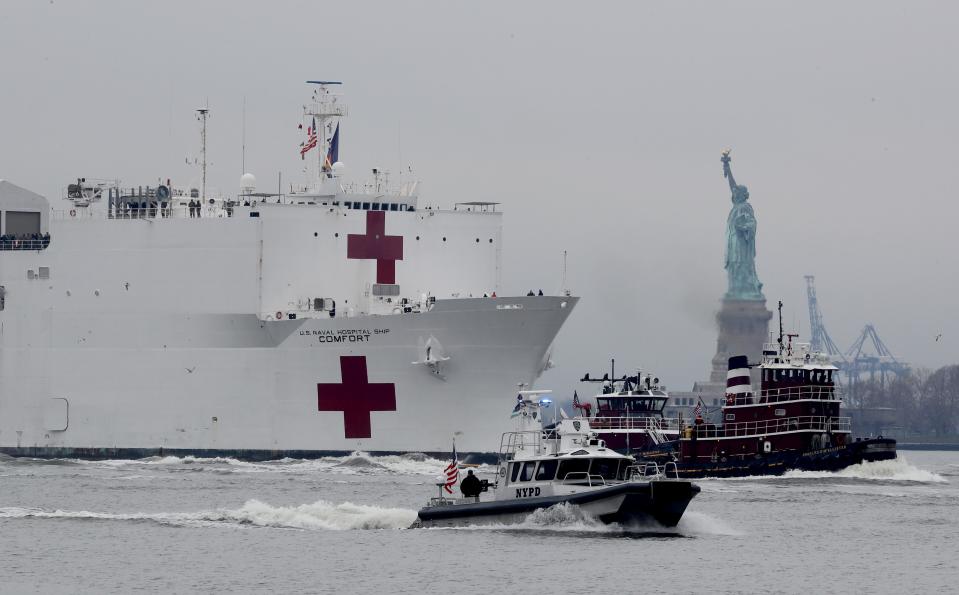
Both events caused scores of deaths, but the notion that either should have taken leaders by surprise is untrue, said Angus Gillespie, an American studies professor at Rutgers University.
The federal government-backed 9/11 Commission report details attacks leading up to Sept. 11, including the World Trade Center bombing in 1993 that killed six people and injured 1,000. Media reports detailed U.S. intelligence briefings that suggested a public health crisis in China was occurring in November 2019, months before the virus took hold in the USA.
"In both cases, the U.S. government was too slow to respond," Gillespie said.
Did 9/11 permanently change life in the US? More Americans say so than ever before.
'Every day … felt like I was going through a war zone'
As she returned to commuting into the city from New Jersey within a few weeks of the attacks, Marshall, who was working at One New York Plaza, noticed something new: hundreds of police officers.
"Every day going to work, it felt like I was going through a war zone," Marshall said.
The daily reminders of the attacks continued for weeks: The rancid smell from ground zero persisted. She called her mother every day to let her know she made it into the office safely. She wrote her next of kin information on the back of a business card she kept with her ID badge.
"For people like me, people who continued to work downtown, they would say, 'No, (Sept. 11) wasn't a single day.' It did have some lasting effect, particularly if you had to see it every single day," Marshall said.
About a month after she returned, her company downsized, and Marshall's job was cut – which she said was a "blessing" as it led to a new job away from the area.
There was great concern after Sept. 11 that companies would leave and people would not want to live and work in lower Manhattan, said Lynne Sagalyn, Columbia Business School professor emerita of real estate.
"There were lots of moving vans," said Sagalyn, who wrote the book "Power at Ground Zero: Politics, Money, and the Remaking of Lower Manhattan."
"It was really, really difficult to live downtown," she said. "Areas were cordoned off for long periods of time, in the beginning, the utilities were destroyed … restaurants closed, there was nothing there. It was a bomb site."
As many as 4,500 residents of lower Manhattan left after the attacks, according to a city report. The number of tourists dropped for two years before recovering by 2003, according to data from the city's tourism corporation.
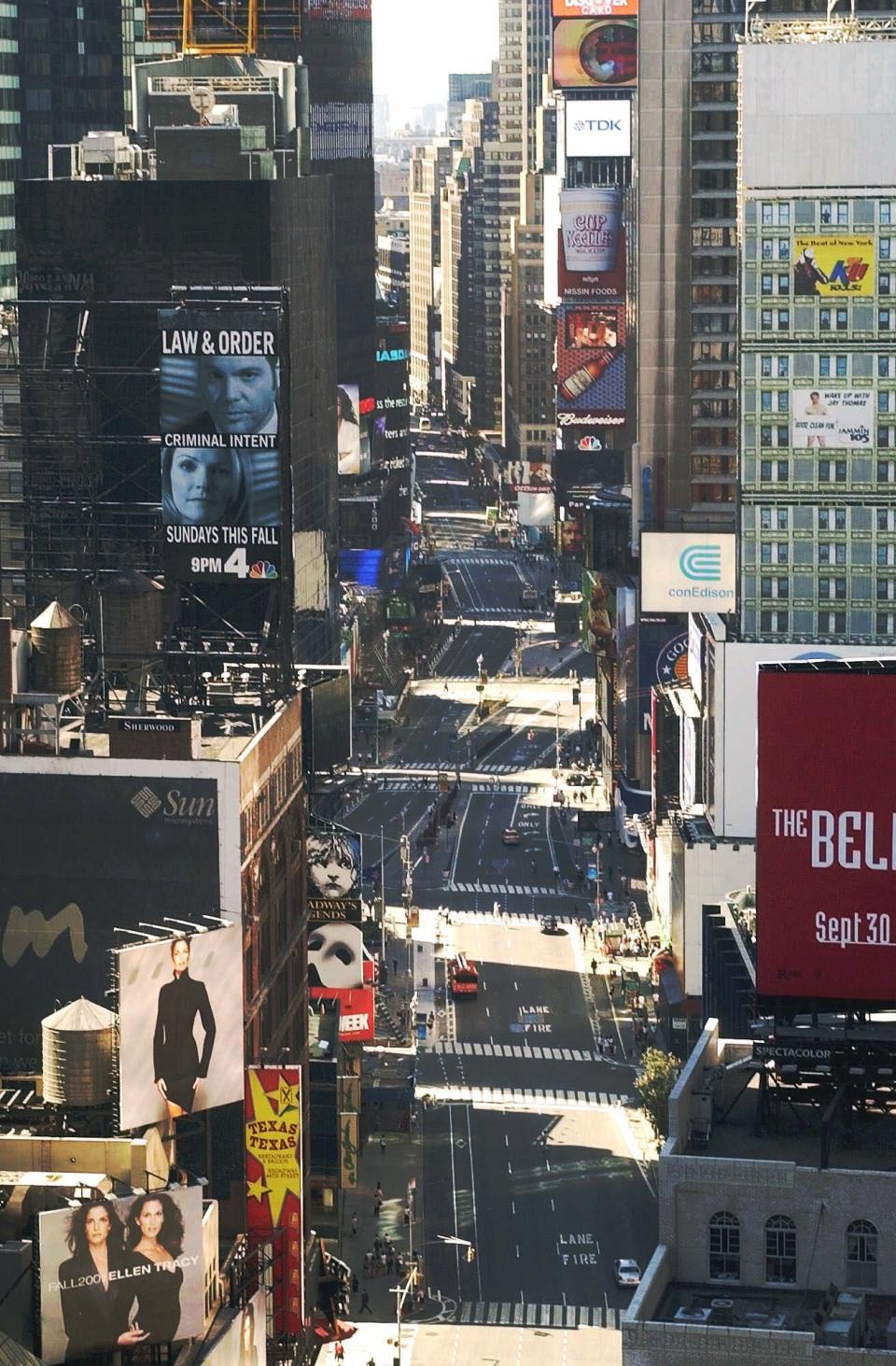
To draw people back, Bloomberg said, the focus had to include quality-of-life issues: safety, cleanliness, good schools and public transit, among other things.
"If you can deliver results in all of those areas, people will come in droves. And that’s what happened post-9/11. Our objective wasn’t just to bring the city back. It was to propel it forward," said Bloomberg, who took office less than four months after the attacks.
Sagalyn said the Lower Manhattan Development Corp., a city and state enterprise, had a large pool of funds that helped support the entire area, not only the rebuilding of the World Trade Center. The organization provided subsidies to retain tenants and residents of office buildings and apartments, which she called "critically important" for driving redevelopment.
Amid the pandemic, New York City saw a dip in its population. Times Square was nearly deserted, and the typically packed subways were sparsely filled. Conversations in local media centered on the age-old question whether New York was "dead." Tourists visiting in 2020 dropped by 67%, and the economic impact of the industry fell by 75%, according to the state comptroller.
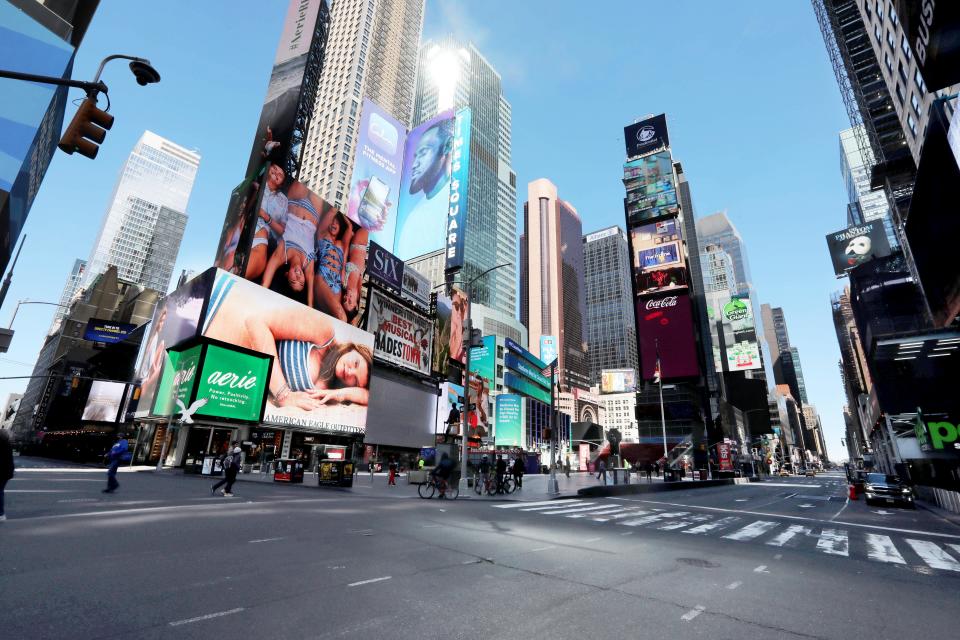
In turn, the same questions have been asked: Will people want to live and work in the cramped spaces of Manhattan?
"The city can't mandate that people go back and work in office buildings. They have to provide the ingredients – safe sanitation, in some cases maybe incentives – to restart the economy or make sure that the private sector can restart the economy," Sagalyn said.
That's a different challenge than physically rebuilding lower Manhattan – which was "terribly fraught," Sagalyn said.
The city lacked control over the World Trade Center site, and disagreements between city, state and private developers delayed rebuilding, other than cleanup, for at least five years, Sagalyn said. What was supposed to be the cornerstone of the new building was removed two years after it was laid.
Still, for a project of its size, One World Trade Center was built relatively fast, Sagalyn noted, opening in October 2014, and the rest of the area was completed not long after.

Public health crises without 'rational' leadership
Decisions made around reopening amid COVID-19 also caused tensions between the city and state, Sagalyn said.
Throughout the pandemic, public disagreements between Mayor Bill de Blasio and then-Gov. Andrew Cuomo defined how some city COVID-19 policies were developed. The pair often held competing news conferences delineating different approaches to the same issue or took not-so subtle jabs at each other in the news media.
The two debated publicly over whether there should be a "shelter-in-place" order, and disagreements over school closures left parents and teachers wondering whether classes would be held in person.
"There were all these squabbles between Bill de Blasio and Andrew Cuomo," said Gillespie, the Rutgers professor. "So my conclusion about lessons learned from COVID in New York City is the consequences of inaction probably led to more death."
9/11 brought a sense of national unity. Why has the pandemic been marred by division?
Attorney Michael Barasch, who represents first responders and survivors who said they developed illnesses caused by the air in Manhattan after the Sept. 11 attacks, said both 9/11 and the pandemic should be treated as public health crises.
In both cases, he said, the federal government lied in a way that hurt New Yorkers. Much like President Donald Trump downplayed risks in the early days of the pandemic, Barasch said, the U.S. Environmental Protection Agency told New Yorkers their air was safe after the attacks. The EPA later admitted it didn't have enough data to make such a claim.
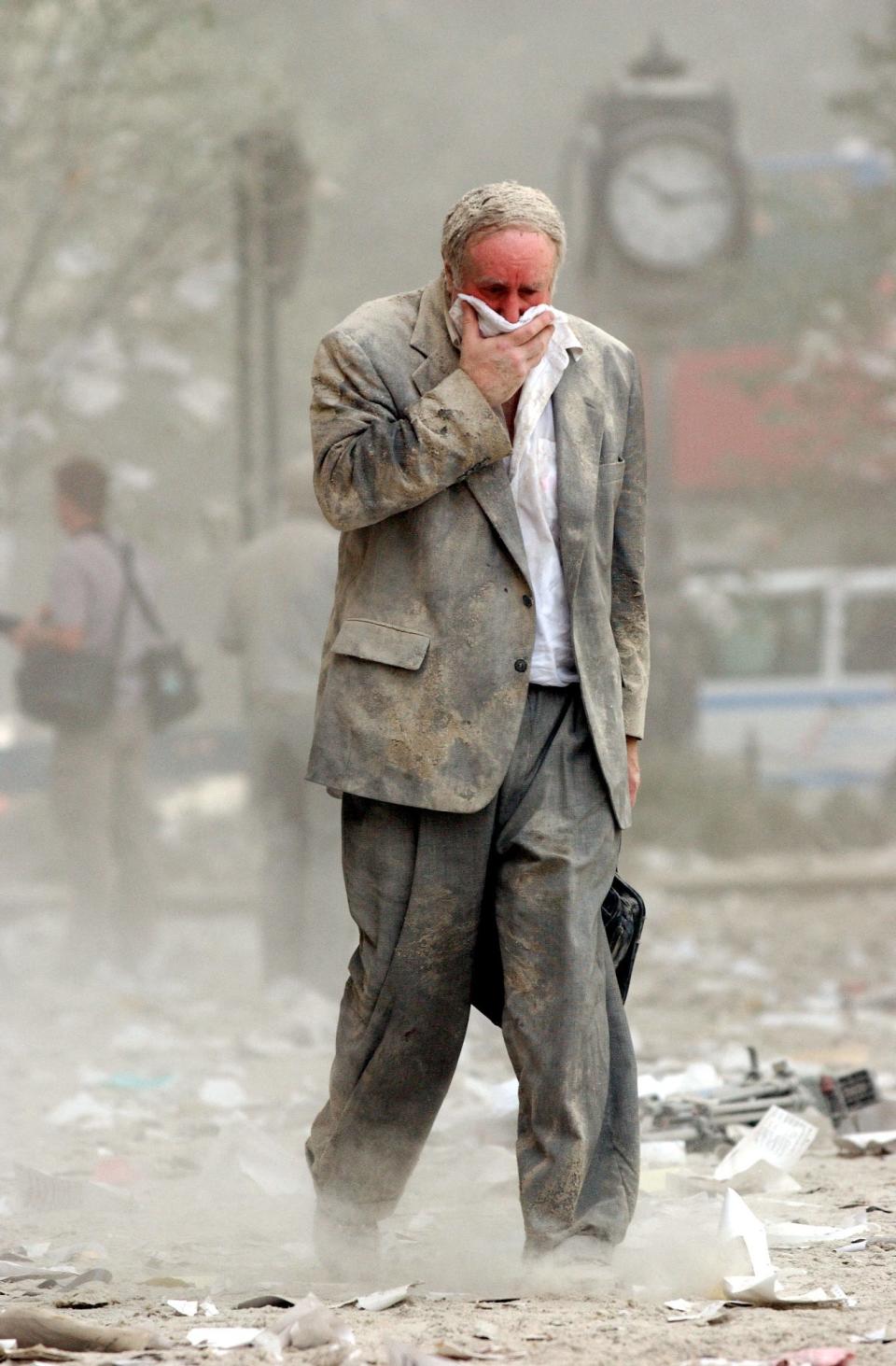
"There was a blind trust that the EPA said it was safe. So why should I be afraid of getting out of the subway and walking into my office? Or going back to school or going back to my my downtown apartment?" Barasch said.
More than 112,000 people have enrolled in the federal World Trade Center Health Program, including first responders and the thousands of survivors who worked, lived or went to school in the area. The program has tracked tens of thousands of cases of respiratory illnesses and rare cancers tied to toxins released in the air after the attacks, and more people have died from 9/11-related illnesses than on the day of the attacks.
"It's striking how many people will come in and say, 'I have 9/11 syndrome. These are my health issues after 9/11,' because they were in the area," Dr. Antonio Dajer said. "It's remarkable that it's a thing, so to speak, that people use that as the benchmark or use it as a framework for their health problems."
On Sept. 11, Dajer was the attending physician in the emergency room of the hospital now called NewYork-Presbyterian Lower Manhattan Hospital, blocks from the World Trade Center.
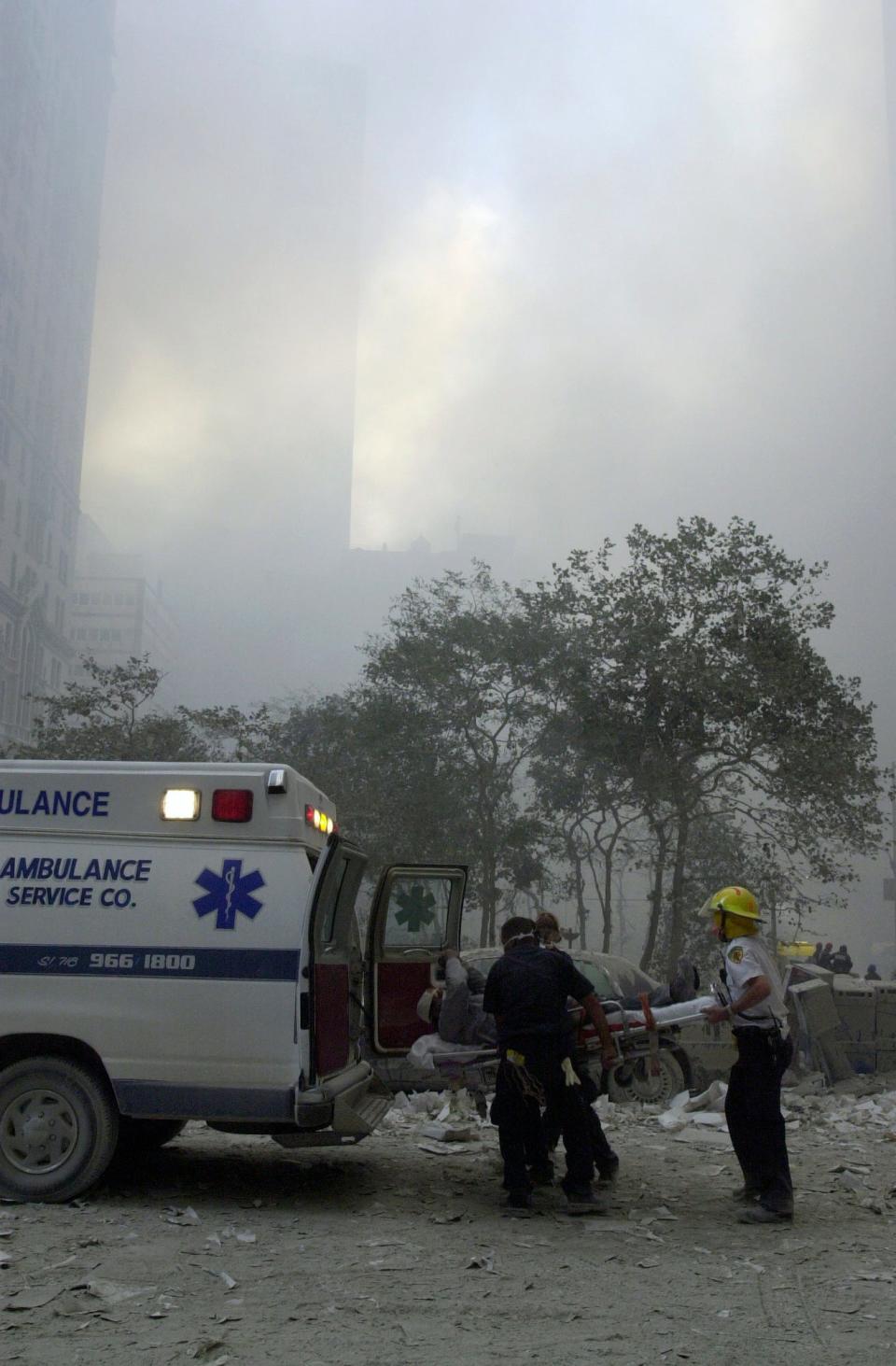
The ER worked efficiently and decisively on the day of the attacks, he said. Health workers were prepared for a major disaster, having run drills and having experienced the World Trade Center bombing in 1993.
"I'm actually still pretty proud of how we responded," Dajer said.
But there was a lack of coordination from political leaders in the days and weeks after the attacks, Dajer said.
For example, first responders were exposed to the toxins for extended periods as the search-and-rescue efforts continued, despite no one being pulled from the rubble alive after Sept. 12. Dajer pointed to the collapse of a building housing the city's emergency command center, which damaged communication downtown on Sept. 11. Mayor Rudy Giuliani administration's had faced criticism over the decision to place the center so close to the World Trade Center after the bombing in 1993.
Having treated COVID-19 patients in the Manhattan ER throughout the pandemic, Dajer said there's been a similar shortsightedness in planning, from the lack of a comprehensive testing infrastructure in the USA to the unscientific promotion of hydroxychloroquine as a treatment.
"What strikes me about the two crises is that you would imagine a coordinated, high level, rational approach to both of them. And there was not one," he said.
'People are drawn to New York'
Despite the worries after Sept. 11, businesses and residents returned to lower Manhattan. According to the city's figures, the population grew by 25% from 2000 to 2005. That was far greater than the population growth in Manhattan as a whole and the city overall.
Public transportation and green space has improved, and the 9/11 Memorial opened 10 years after the attacks, followed by the museum opening to the public in 2014.
More: How a vision for the 9/11 Memorial blossomed into a piece of New York's everyday fabric
Even as the delta variant drives a new surge in COVID-19 cases in New York, there are positive signs for the city's economic growth. Census data shows its population has grown since 2010. Its vaccination rates outpace national averages. Ridership on public transport and foot traffic in Times Square have risen since the pandemic's lows. Though the availability of office spaces in Manhattan remains high, occupancy and leasing has increased amid limited reopening, according to real estate services provider Savills.
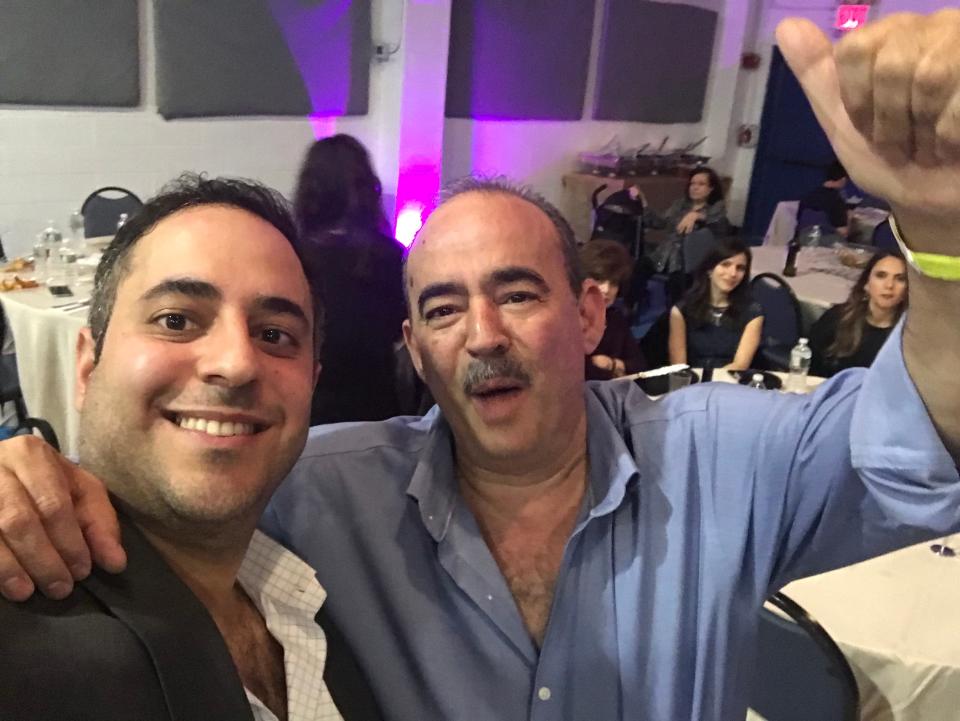
Koutsoudakis, who took over his father's restaurant, said he hopes the fears around COVID-19 will be alleviated in the way tension eventually eased after Sept. 11.
"When 9/11 happened, I remember talking about how forever we're going to live in this 'fear of terrorism' state," he said, describing the paranoia many felt about something else possibly happening. "And slowly but surely, it just became something that's in the background."
In the years after the attacks, Koutsoudakis said his father thought about what would be next for Tribeca. Part of the decision to open his own place was driven by the foresight that rents would keep increasing and new residents would want different restaurants with updated menus.
Koutsoudakis redesigned the restaurant to honor his father's legacy as a man dedicated to family and his neighborhood, modeling different parts of the restaurant after his family's home.
Outdoor dining opened in July, and state restrictions eased in February, allowing a full return indoors.
"People are drawn to New York. … (It) doesn't matter what you throw at us, we're always going to try to find a way to make it work," Koutsoudakis said. "I haven't seen anything strong enough to indicate that that's not here anymore."
Contributing: Mike Stucka
Follow USA TODAY's Ryan Miller on Twitter @RyanW_Miller
Sept. 11 by the numbers: Facts from a tragic day in American history
‘Maybe we don’t have control over our destinies’: Touching stories from the class of 9/11
This article originally appeared on USA TODAY: New York City's 9/11 resilience helps it rebuild from COVID-19

